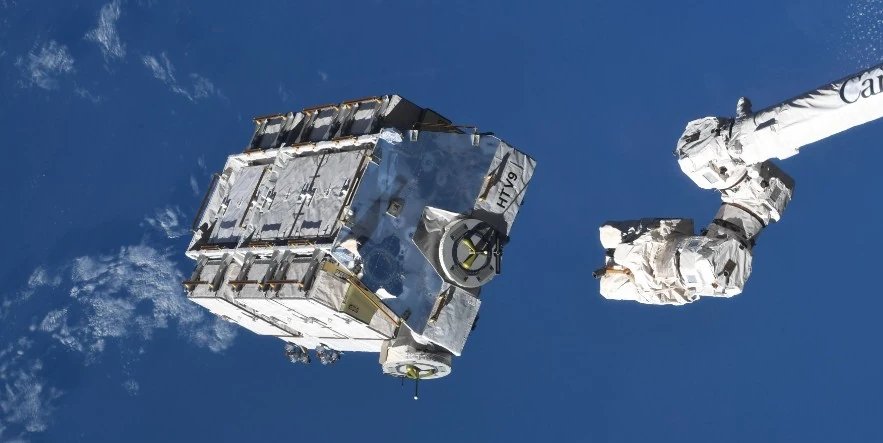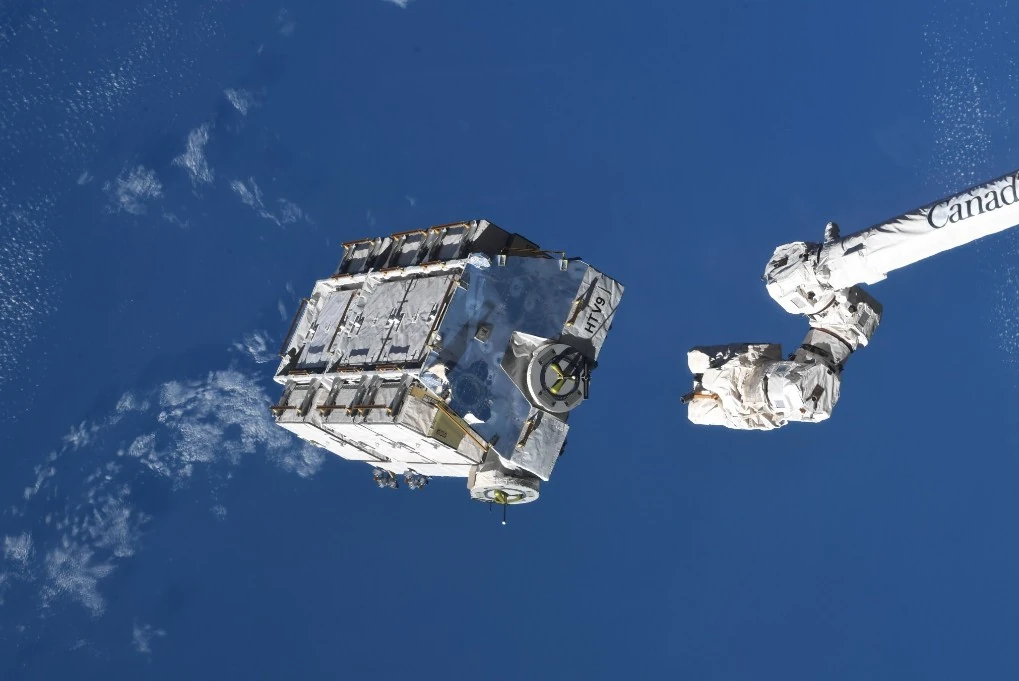Largest object ever jettisoned from ISS to make uncontrolled re-entry this week

The International Space Station’s (ISS) largest-ever discarded object, a hefty equipment pallet weighing 2.9 tons, is anticipated to make an uncontrolled descent back to Earth between March 8 and 9, 2024. Launched into space for a critical ISS power system upgrade, this pallet, loaded with nine old station batteries, will not fully disintegrate upon re-entry, with predictions indicating about half a ton of debris could survive the descent and impact the planet’s surface.
The International Space Station’s most massive object ever released—a 2 633 kg (5 800 pounds) equipment pallet—is expected to make an uncontrolled re-entry into Earth’s atmosphere this week.
According to official statements, the re-entry window is estimated between 12:30 UTC on March 8 and 08:30 UTC on March 9, 2024. Approximately 500 kg (1 100 pounds) of fragments are likely to impact the Earth’s surface.
Reentry of the EP-9 battery pallet jettisoned from ISS in 2021 is currently predicted (by Space Force) between 1230 UTC Mar 8 and 0830 UTC Mar 9. It will not totally burn up on reentry – about half a tonne of fragments will likely hit the Earth's surface.
— Jonathan McDowell (@planet4589) March 7, 2024
The pallet, dispatched into the void by the station’s robotic arm, Canadarm-2, on March 11, 2021, was initially brought to the ISS by Japan’s HTV9 cargo ship in May 2020. Its mission was to assist astronauts in swapping out the station’s older nickel-hydrogen batteries for new, more efficient lithium-ion ones.
This equipment played a vital role in a series of operations that saw 48 old batteries replaced with 24 new ones across six years, involving four supply missions from the Japanese H-II Transfer Vehicle (HTV) cargo spacecraft, 13 astronauts, and 14 spacewalks.
“It was the largest object—mass-wise—ever jettisoned from the International Space Station,” NASA spokesperson Leah Cheshier said in March 2021. This jettison surpasses the previous record held by the Early Ammonia Servicing System tank released during the STS-118 mission in 2007.

The decision to dispose of the pallet in an uncontrolled manner was not part of the original mission plan. It resulted from logistical challenges and a backlog in equipment disposal caused by the failed launch of a Soyuz rocket in 2018.
This incident, which forced an emergency landing for NASA astronaut Nick Hague and Roscosmos cosmonaut Alexey Ovchinin, disrupted the schedule for spacewalks and subsequent equipment disposal. Typically, old batteries would be secured within an HTV and safely jettisoned to burn upon re-entry. However, due to the postponement of spacewalks and the phasing out of the old HTV design in favor of the new HTV-X cargo spacecraft, the pallet had to be discarded independently.
Updates
March 9 at 08:09 UTC
The EP-9 equipment pallet re-entered at 19:29 UTC on March 8 over the Gulf of Mexico between Cancun and Cuba, said astronomer Jonathan McDowell. “This was within the previous prediction window but a little to the northeast of the ‘most likely’ part of the path. A couple minutes later reentry and it would have reached Ft Myers.”
April 16
Although expected to completely burn up upon re-entry, a 0.7 kg (1.6 pounds) piece of the pallet made of Inconel survived and impacted a home in Naples, Florida. This incident marked the first time a debris fragment of such a large mass from the ISS survived re-entry. NASA is now reviewing their jettison procedures and re-entry prediction models to enhance safety, following the unexpected incident which fortunately did not result in any injuries.
Read more:
Featured image credit: NASA/ISS

Commenting rules and guidelines
We value the thoughts and opinions of our readers and welcome healthy discussions on our website. In order to maintain a respectful and positive community, we ask that all commenters follow these rules.